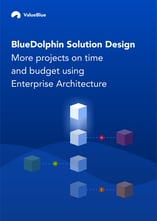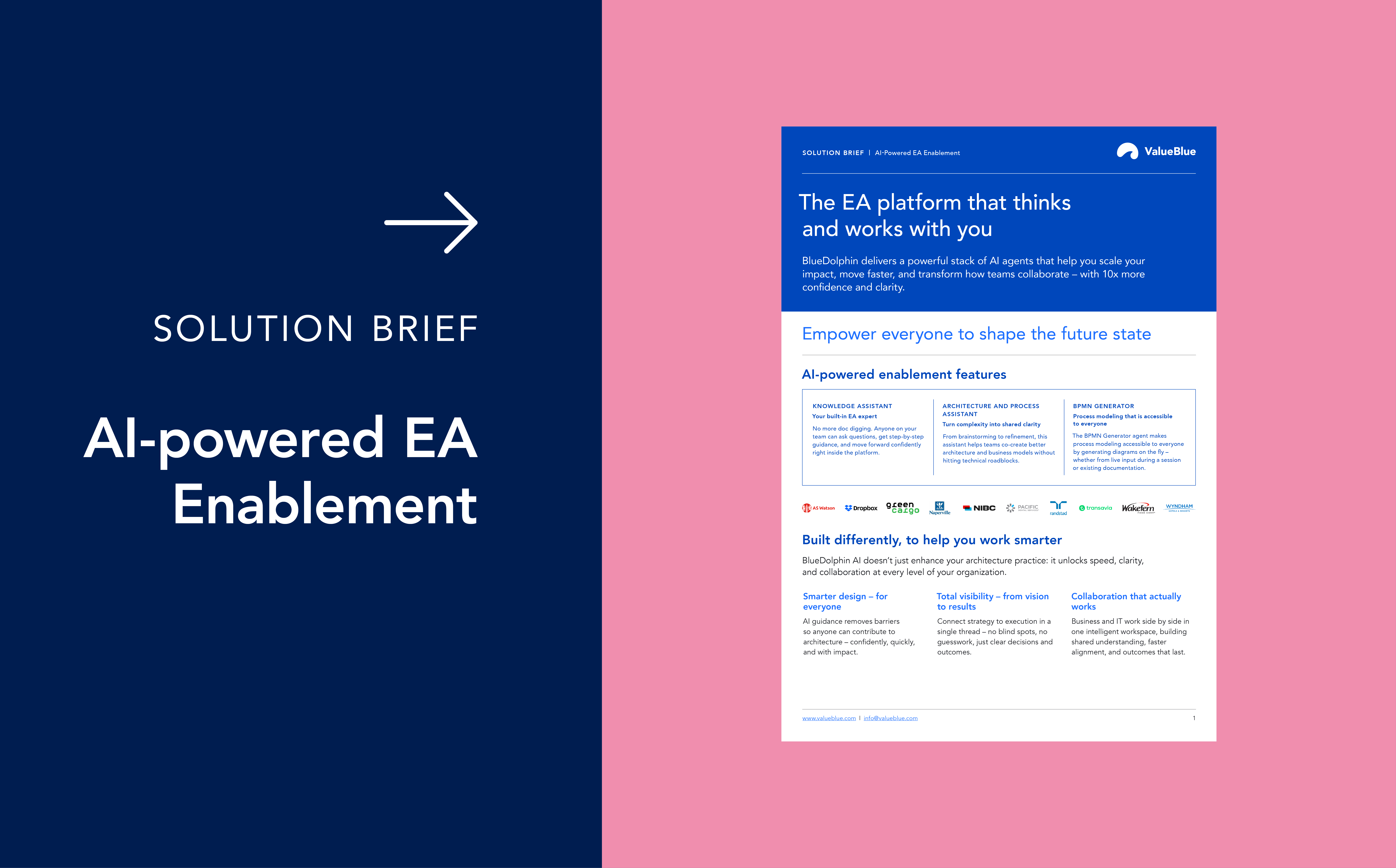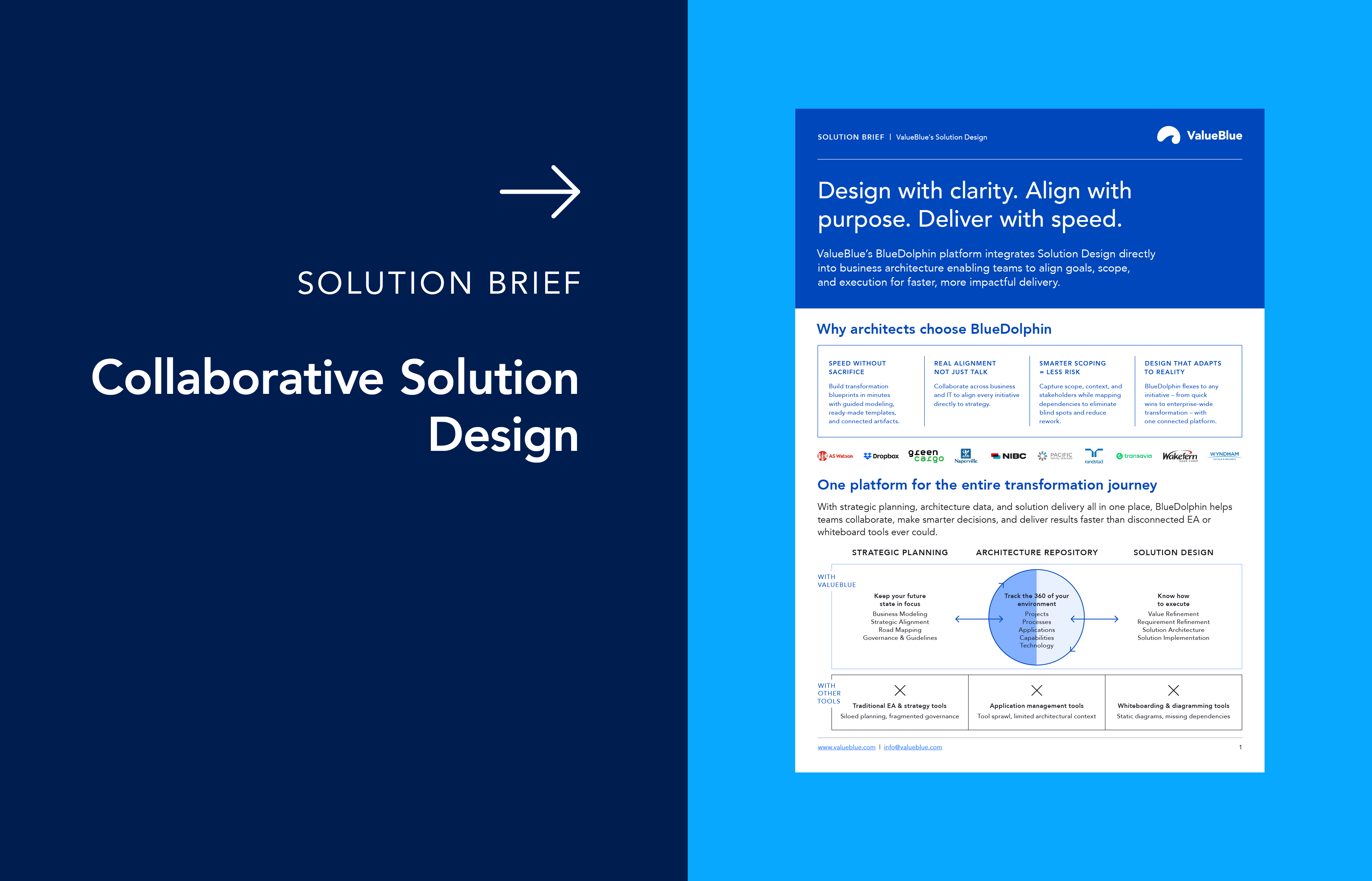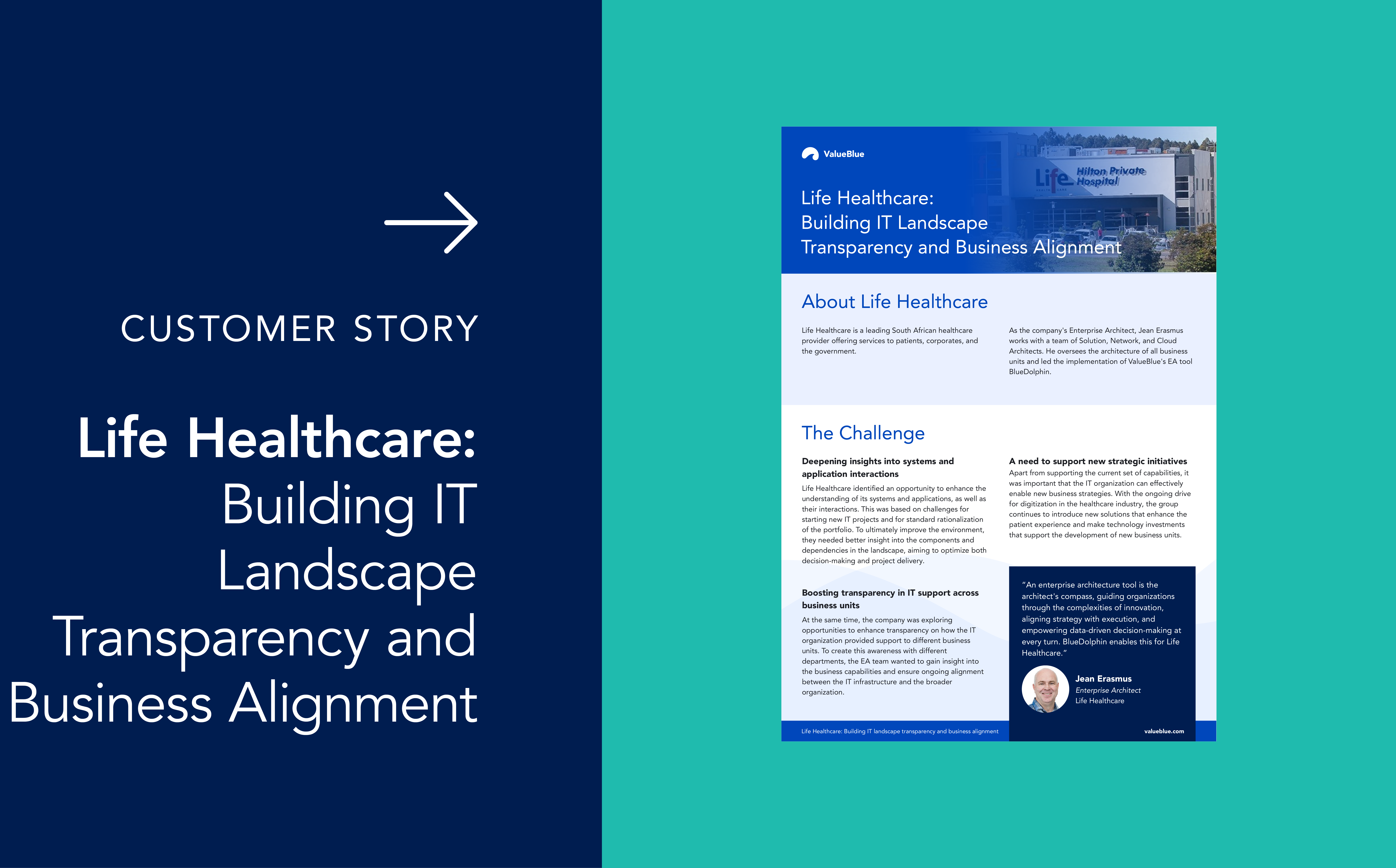Overcoming Common Challenges in Solution Design
Designing solutions in complex enterprise environments is rarely straightforward. It is often hindered by fragmented systems, misaligned stakeholders, and outdated architectural documentation. These challenges make it difficult to plan and implement effective change. This slows down progress, increases risk, and drives up costs.
Solution Design addresses these issues by translating business objectives into practical, scalable technology solutions. It serves as the bridge between strategic intent and technical execution, ensuring that change initiatives are not only well-architected but also aligned with broader enterprise goals.
Despite its importance, many organizations struggle to execute Solution Design effectively. In this article, we explore the most common challenges faced during Solution Design and practical ways to overcome them.
Challenge 1: Outdated Enterprise Architecture repositories
Solution designers often rely on Enterprise Architecture repositories to understand the current state of applications, processes, and data flows. However, in many organizations, these repositories are static, outdated, or poorly maintained. As a result, designers work from inaccurate information, leading to flawed assumptions and suboptimal solutions.
Outdated repositories are particularly problematic in fast-changing environments where systems evolve quickly through agile development, mergers and acquisitions (M&A) activity, or infrastructure modernization.
Solutions:
Unify Solution Design with Enterprise Architecture
The best way to keep architectural data relevant is to integrate Solution Design and Enterprise Architecture efforts within the same platform and governance process. When both disciplines operate in silos, updates made during solution implementation are rarely transferred back to the architectural repository. By unifying these activities, updates become a part of project delivery process.
Enable real-time collaboration
Use collaborative platforms that allow architects, solution designers, and delivery teams to co-manage and review architecture models. This real-time visibility ensures architecture remains a living resource, reflecting the actual state of the enterprise.
Challenge 2: Lack of stakeholder buy-in
Internal stakeholders often hesitate to support Solution Design efforts when they don’t understand the value or feel excluded from the process. This lack of buy-in can act as resistance to change, delayed decisions, or a lack of support during implementation.
Too often, Solution Designs are created in technical language or static documentation that alienates non-technical audiences.
Solutions:
Use visual communication
Architecture models and Solution Designs should be visual and intuitive. Replace text-heavy documentation with diagrams, journey maps, or interactive dashboards that clearly illustrate business processes, application dependencies, and transformation outcomes. Visual storytelling helps stakeholders connect the dots between business strategy and technical execution.
Engage early and often
Successful Solution Design isn’t something that happens “behind closed doors.” Involve stakeholders from the beginning, especially business leaders, process owners, and operations teams. Early engagement ensures that requirements are fully met and that stakeholders feel a sense of ownership over the proposed solution.
Leverage Enterprise Architecture governance
Enterprise Architecture can provide governance structures that formalize stakeholder engagement, such as architecture review boards or design authority councils. These forums give stakeholders a structured way to provide input and gain confidence in the direction.
Challenge 3: Overly complex Solution Designs
It’s tempting to build designs that cover every possible use case, edge case, and dependency. However, this often results in overly complex designs that are difficult to implement, maintain, or scale.
Complexity increases risk. It slows down delivery and makes it harder for teams to adapt to change. In many cases, simpler solutions are more effective than exhaustive blueprints.
Solutions:
Embrace “just enough” architecture
Focus on creating Solution Designs that are “just enough” to guide implementation. This doesn’t mean being incomplete – it means being purposeful. Model only what is necessary to support the decision at hand and avoid unnecessary detail that doesn’t add value.
Prioritize based on Business Value
Not all requirements are equally important. Use value-based prioritization to identify which capabilities or components drive the most business impact, and focus design efforts accordingly. Enterprise Architecture frameworks can help you align technical priorities with business strategy.
Challenge 4: Disconnect between strategy and execution
Many Solution Designs fail because they are developed in isolation from enterprise strategy. Designers may focus too narrowly on a project’s technical needs without considering broader business goals, architectural principles, or strategic roadmaps.
This disconnect often leads to short-term fixes that undermine long-term agility, increase technical debt, or duplicate capabilities.
Solutions:
Use capability-based planning
Start with business capabilities rather than systems. By mapping capabilities to processes, applications, and technologies, you ensure that Solution Design supports core business functions, and avoid building redundant or misaligned capabilities.
Create traceability across layers
Establish traceability between strategy, architecture, and execution layers. This means ensuring that business goals align with capabilities, capabilities with solutions, and solutions with projects or products. Such traceability makes it easier to identify misalignment and course-correct early.
Driving better outcomes through Solution Design
Effective Solution Design is essential to successful transformation initiatives, but it doesn’t come without challenges. From outdated documentation to stakeholder disengagement and complexity overload, the hurdles are real and persistent. By leveraging Enterprise Architecture principles, embracing collaborative tools, and maintaining a sharp focus on business value, organizations can overcome these obstacles.
The key lies in aligning people, processes, and platforms to enable smarter, faster, and more sustainable solution design. When done right, Solution Design becomes not just a technical activity, but a strategic enabler of change.
Discover how BlueDolphin helps you align Enterprise Architecture, engage stakeholders, and design solutions that drive real change. Book a demo today and see it in action.
Learn more about 
Solution Design
Discover how BlueDolphin Solution Design helps align strategy and execution
- delivering projects faster, smarter, and with greater business impact.





